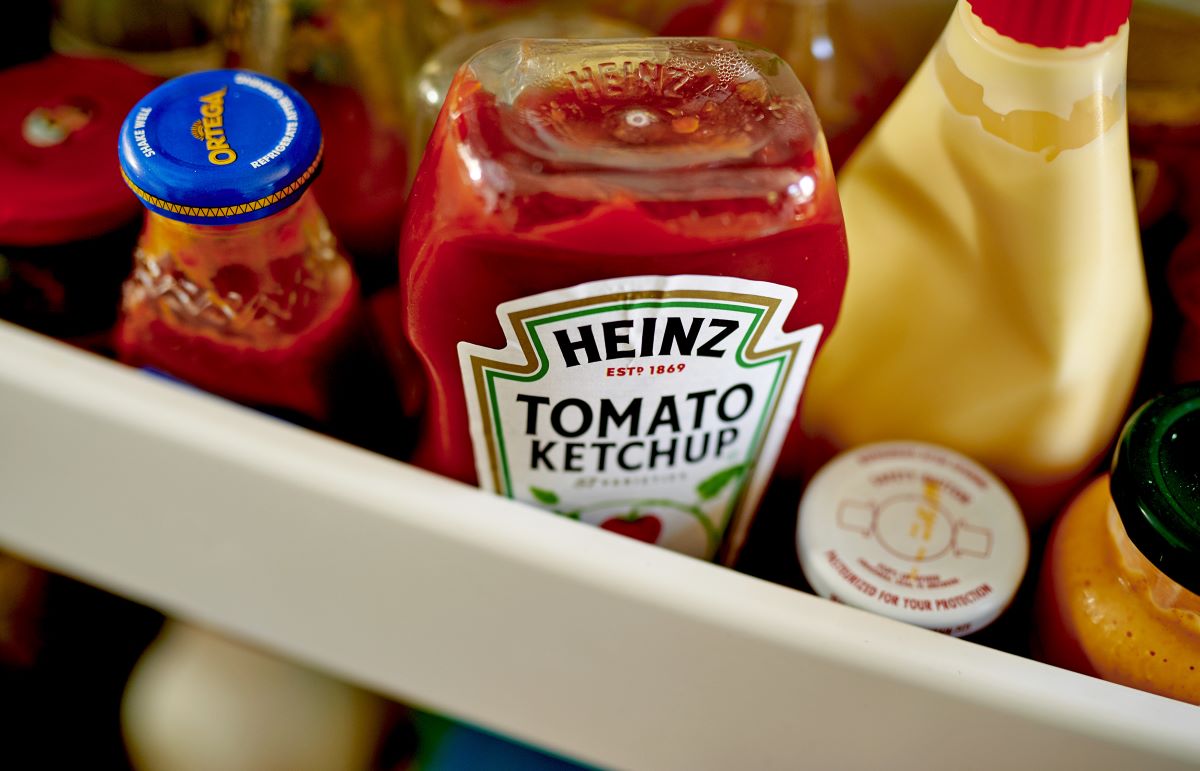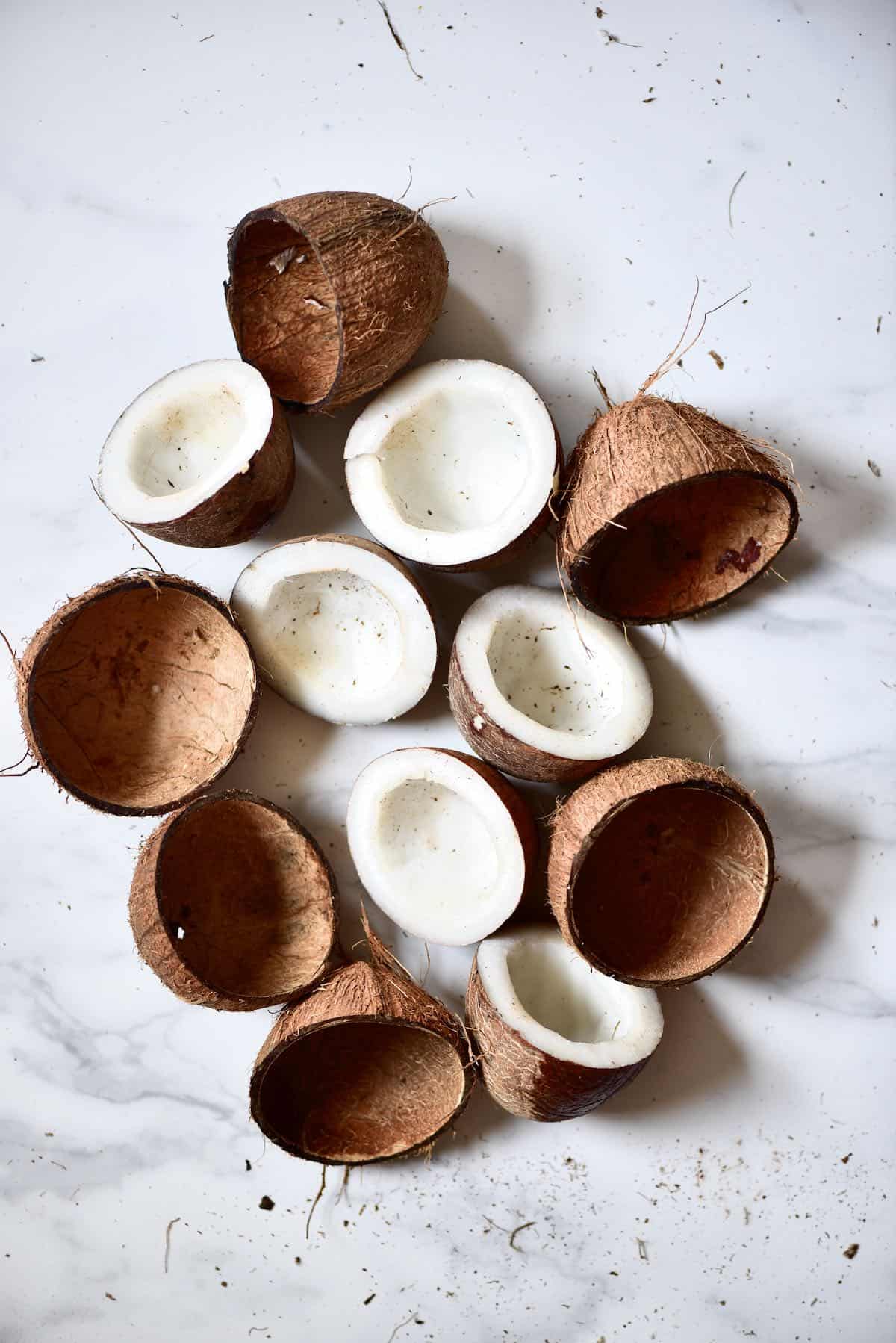

Articles
How To Store Sake After Opening
Modified: February 23, 2024
Discover the best way to store sake after opening with our informative articles. Keep your sake fresh and flavorful for longer periods.
(Many of the links in this article redirect to a specific reviewed product. Your purchase of these products through affiliate links helps to generate commission for Storables.com, at no extra cost. Learn more)
Introduction
Sake is a beloved Japanese alcoholic beverage that has gained popularity worldwide for its unique flavor profile and cultural significance. Made from fermented rice, sake is known for its delicate aroma and smooth taste. However, once you open a bottle of sake, it’s important to store it properly to maintain its quality and freshness.
In this article, we will explore the best practices for storing sake after opening, ensuring that you can enjoy its flavors and characteristics for as long as possible.
Key Takeaways:
- Properly seal opened sake to prevent oxidation and store in a cool, dark place to maintain its delicate flavors and aromas. Consider refrigeration in warm climates and use within a reasonable timeframe for optimal enjoyment.
- Utilize a wine preserver to extend the lifespan of opened sake, but remember to trust your senses and judgment when determining its freshness. Follow these tips to savor the unique qualities of sake.
Read more: How To Store Bacon After Opening
Understanding Sake Storage
Before we delve into the tips for storing sake after opening, it’s important to understand how sake reacts to different storage conditions. Sake is a delicate beverage that can be affected by various factors such as temperature, light, and air exposure.
Firstly, temperature plays a crucial role in the preservation of sake. Extreme heat or cold can damage the flavors and aromas of sake, leading to a subpar drinking experience. It is generally recommended to store sake in a cool and dark place, away from direct sunlight or sources of heat.
Secondly, light exposure can also have a negative impact on sake. UV rays can cause chemical reactions in sake, resulting in off-flavors and deterioration in quality. Therefore, it is advisable to store sake in opaque containers or in a dark environment.
Lastly, air exposure can lead to oxidation, which can alter the taste and aroma of sake. When sake comes into contact with air, it begins to degrade, losing its freshness and becoming less enjoyable to drink. To minimize air exposure, it’s crucial to properly seal the bottle after opening and store it in a suitable environment.
Now that we understand the importance of temperature, light, and air exposure in sake storage, let’s explore some practical tips for storing sake after opening.
Tips for Storing Sake After Opening
Once you’ve opened a bottle of sake, it’s crucial to store it properly to maintain its quality and flavors. Follow these tips to ensure your sake remains fresh and enjoyable:
- Seal the Bottle Properly: After pouring sake, make sure to seal the bottle tightly with its original cap or a wine stopper. This will help prevent air from entering the bottle and minimize oxidation.
- Store in a Cool and Dark Place: Find a cool and dark location to store your opened sake bottle, such as a pantry or cellar. Avoid placing it near heat sources or in direct sunlight, as excessive heat and light can negatively impact its flavors and aromas.
- Refrigerate if Necessary: If you live in a warm climate or during the summer months, refrigerating opened sake can be beneficial. However, it’s important to note that consistently fluctuating temperature can also affect the taste of sake. If you choose to refrigerate, allow the sake to return to room temperature before drinking.
- Avoid Temperature Fluctuations: Sake is sensitive to temperature changes, so try to avoid rapid fluctuations. Keep the sake bottle in a stable environment to preserve its flavors and prevent spoilage.
- Use within a Reasonable Timeframe: While sake can last longer than other types of wine or spirits once opened, it is still best enjoyed within a reasonable timeframe. Generally, it is recommended to consume opened sake within a few days to a couple of weeks for optimal flavor.
- Consider Using a Wine Preserver: If you want to extend the lifespan of your opened sake, you can consider using a wine preserver. These devices remove air from the bottle and create a seal, helping to maintain the sake’s freshness for a longer period. However, it’s important to note that the effectiveness may vary.
By following these tips, you can ensure that your opened sake remains fresh, delicious, and true to its original flavors.
Seal the Bottle Properly
When you open a bottle of sake, it’s crucial to seal it properly to prevent air from entering and oxidizing the delicate flavors and aromas. Follow these steps to ensure a tight seal:
- Use the Original Cap: Most sake bottles come with a cap or lid. After pouring your desired amount of sake, carefully place the cap back onto the bottle. Ensure that it is securely tightened to create a seal and prevent any air from entering.
- Consider a Wine Stopper: If you have misplaced the original cap or lid, or if it is damaged, you can use a wine stopper as an alternative. Choose a stopper that fits snugly into the bottle’s opening to create a tight seal. These stoppers can be reusable and are an excellent option for preserving sake after opening.
- Vacuum Sealers: Another option to consider is a vacuum sealer. These devices remove the air from the bottle, creating a vacuum seal that helps to preserve the freshness of the sake. Note that vacuum sealers are typically used for wine bottles, so you may need an adapter or specialized seal if your sake bottle has a different neck size.
- Store Upright: When sealing the sake bottle, make sure to store it upright. This minimizes the surface area of sake exposed to air, reducing the potential for oxidation. Avoid storing the bottle on its side, as this can increase the contact between the sake and air, accelerating spoilage.
By taking these steps to properly seal the bottle, you can prolong the lifespan of your opened sake and enjoy its flavors and aromas to the fullest extent.
Store in a Cool and Dark Place
When it comes to storing sake after opening, finding the right location is essential to maintain its quality and preserve its delicate flavors. Here are some key considerations for storing sake in a cool and dark place:
- Away from Heat Sources: Heat is one of the enemies of sake. Exposure to high temperatures can accelerate the aging process and cause the sake to spoil. Avoid storing sake near stoves, ovens, or other heat-emitting appliances. It’s also important to keep sake away from direct sunlight, as UV rays can degrade the flavors and aromas.
- Choose a Stable Temperature: Sake is best stored at a consistent temperature. Fluctuations in temperature can affect the taste and quality of the sake. Aim for a cool and stable environment, ideally between 45-55°F (7-13°C). Avoid storing sake in places with significant temperature variations, such as near windows or outside walls that are exposed to external temperatures.
- Consider a Cellar or Pantry: If you have a cellar or pantry, these are ideal storage locations for sake. These areas tend to have a stable temperature and are shielded from light, creating an optimal environment for preserving sake. If a cellar or pantry is not available, choose a location that closely mimics these conditions.
- Avoid the Refrigerator Door: While refrigeration can be beneficial for storing opened sake in warmer climates or during summer, it’s important to choose the right spot in the fridge. Avoid storing sake on the refrigerator door, as it is exposed to more temperature fluctuations. Instead, place it towards the back of the fridge where temperatures are more stable.
By storing your opened sake in a cool and dark place, you can protect it from heat, light, and temperature fluctuations, ensuring that it maintains its freshness and flavors.
After opening, store sake in the refrigerator to maintain its flavor and quality. Use a tightly sealed container to prevent oxidation and consume within a few days for the best taste.
Read more: How To Store Caulk After Opening
Refrigerate if Necessary
Refrigeration can be a suitable option for storing opened sake, especially in warmer climates or during the summer months. However, it’s important to follow some guidelines to ensure that refrigeration is done correctly:
- Consider the Sake Type: Not all types of sake benefit from refrigeration. Generally, it is recommended to refrigerate unfiltered or unpasteurized sake, as they are more prone to spoiling due to their delicate nature. However, if you have a more stable and commercially produced sake, refrigeration may not be necessary.
- Allow for Temperature Adjustment: Before serving refrigerated sake, it’s important to let it adjust to room temperature. Sake served too cold may have muted flavors and aromas. Remove the refrigerated bottle from the fridge and let it sit for a while before enjoying. This will allow the sake to regain its optimal flavor profile.
- Store Properly in the Fridge: When storing sake in the refrigerator, make sure it is placed upright to minimize contact with air and to reduce the risk of leaks. Keep it away from strong-smelling foods or items that may affect the flavor of the sake.
- Check the Expiration Date: If your sake bottle has an expiration date, make sure to consume it before or on the indicated date, even if it has been refrigerated. Refrigeration can extend the lifespan of opened sake, but it is not a guarantee of indefinite freshness.
Remember, refrigeration is not mandatory for all types of sake, and some may be best enjoyed at room temperature. Assess the specific characteristics of your sake and the environmental conditions before deciding whether to refrigerate or leave it at room temperature.
Avoid Temperature Fluctuations
Consistency is key when it comes to storing sake after opening. It’s important to avoid temperature fluctuations as much as possible to maintain the quality and flavors of the sake. Here are some tips to help you achieve a stable environment:
- Choose a Stable Storage Location: Select a location that maintains a consistent temperature. Avoid areas that are prone to temperature fluctuations, such as near windows, vents, or appliances that generate heat. A cool and dark corner of a room, away from direct sunlight, is often a good choice.
- Avoid Moving the Sake Bottle: Once you have found the perfect storage spot, try to minimize movement of the sake bottle. Frequent handling or transportation can result in temperature changes, potentially affecting the taste and quality of the sake.
- Control Room Temperature: If you are unable to find a consistently cool location, consider using temperature-control devices or appliances like wine coolers or temperature-controlled cabinets. These can help regulate the temperature and prevent sudden shifts that may negatively impact the sake.
- Avoid Sudden Temperature Changes: Do not expose the sake bottle to extreme fluctuations in temperature. Rapid changes can cause stress to the sake and alter its flavors. For example, avoid taking the bottle from a warm room and placing it directly in the refrigerator.
By maintaining a stable and consistent temperature for your sake storage, you can preserve its flavors and ensure a delightful drinking experience every time.
Use within a Reasonable Timeframe
While sake can last longer than other types of wine or spirits once opened, it is still advisable to consume it within a reasonable timeframe to enjoy its fresh and vibrant flavors. Here are some considerations for using opened sake within an appropriate timeframe:
- Check the Manufacturer’s Recommendations: Some sake bottles may come with suggested consumption guidelines. Manufacturers often provide information about how long the sake can maintain its quality after opening. Refer to these recommendations for guidance.
- Consider the Sake Type: The type of sake can also influence its shelf life after opening. Generally, unpasteurized or unfiltered sake should be consumed within a shorter period as they are more prone to deterioration. Sake with higher alcohol content tends to last longer compared to those with lower alcohol content.
- Store in the Right Conditions: Proper storage conditions can help prolong the freshness of sake. By following the tips mentioned earlier, such as storing in a cool and dark place, sealing the bottle properly, and avoiding temperature fluctuations, you can extend the lifespan of sake after opening.
- Use Your Senses: As time passes, the flavor and aroma of sake may gradually deteriorate. To determine if the sake is still suitable for consumption, rely on your senses. Smell the sake to check for any off-putting or unpleasant aromas. Taste a small amount to ensure that it hasn’t become overly flat or sour.
- Trust Your Judgment: Ultimately, it’s important to trust your judgment when deciding whether to consume opened sake. If you notice any significant changes in flavor, aroma, or appearance, it may be best to discard the sake rather than risk a subpar drinking experience.
While there is no set timeframe for how long opened sake can remain enjoyable, it is recommended to consume it within a few days to a couple of weeks. By doing so, you can savor the best qualities of the sake.
Consider Using a Wine Preserver
If you want to extend the lifespan of your opened sake and maintain its freshness for a longer period, you can consider using a wine preserver. While primarily designed for wine preservation, these devices can also be effective for preserving sake. Here’s how a wine preserver can help:
- Removes Air: Wine preservers work by removing air from the bottle, creating a vacuum seal. By eliminating the presence of oxygen, which can cause oxidation, the sake is protected from spoilage and maintains its flavors for a longer period.
- Preserves Aromas and Flavors: The airtight seal created by a wine preserver helps to preserve the delicate aromas and flavors of the sake. It ensures that the sake remains true to its original profile, allowing you to enjoy it as if it were freshly opened.
- Easy to Use: Wine preservers are typically simple to use. You can find both manual and electronic options in the market. To preserve the sake, insert the preserver into the bottle, pump or activate the device according to the manufacturer’s instructions, and the vacuum seal will be created.
- Various Options Available: Wine preservers come in different forms, such as manual pumps, gas cartridges, or electric vacuum sealers. Consider your preferences and budget when selecting a device that suits your needs.
- Effectiveness May Vary: It’s important to note that the effectiveness of wine preservers on sake preservation may vary. Some people report successful results, while others may not experience the same level of preservation. Factors such as the type of sake, storage conditions, and the preserver itself can all contribute to the outcome. Experimentation may be necessary to find the right solution for your specific situation.
While a wine preserver can be a useful tool for extending the lifespan of opened sake, it’s important to remember that it is not a foolproof method. It is still advisable to follow the other mentioned tips for storing sake properly to maximize its freshness and quality.
Read more: How To Store Tahini After Opening
Conclusion
Proper storage of sake after opening is crucial to preserve its delicate flavors and aromas. By following the tips outlined in this article, you can ensure that your opened sake remains fresh and enjoyable for as long as possible.
Sealing the bottle properly and storing it in a cool and dark place are fundamental steps in maintaining the quality of opened sake. Refrigeration can be beneficial in certain situations, but it’s important to allow the sake to adjust to room temperature before consuming. Avoiding temperature fluctuations and using opened sake within a reasonable timeframe are also essential considerations.
If you want to prolong the lifespan of your opened sake, you may consider using a wine preserver. While their effectiveness may vary, wine preservers can help remove air and create a vacuum seal, preserving the sake’s aromas and flavors.
Remember, each sake is unique, so the specific storage requirements may vary. Always check the manufacturer’s recommendations and rely on your senses to determine if the sake is still suitable for consumption.
By following these guidelines and paying attention to the proper storage and handling of opened sake, you can continue to enjoy the rich and complex flavors that make sake such a beloved beverage. Cheers!
Frequently Asked Questions about How To Store Sake After Opening
Was this page helpful?
At Storables.com, we guarantee accurate and reliable information. Our content, validated by Expert Board Contributors, is crafted following stringent Editorial Policies. We're committed to providing you with well-researched, expert-backed insights for all your informational needs.














0 thoughts on “How To Store Sake After Opening”